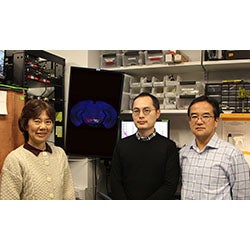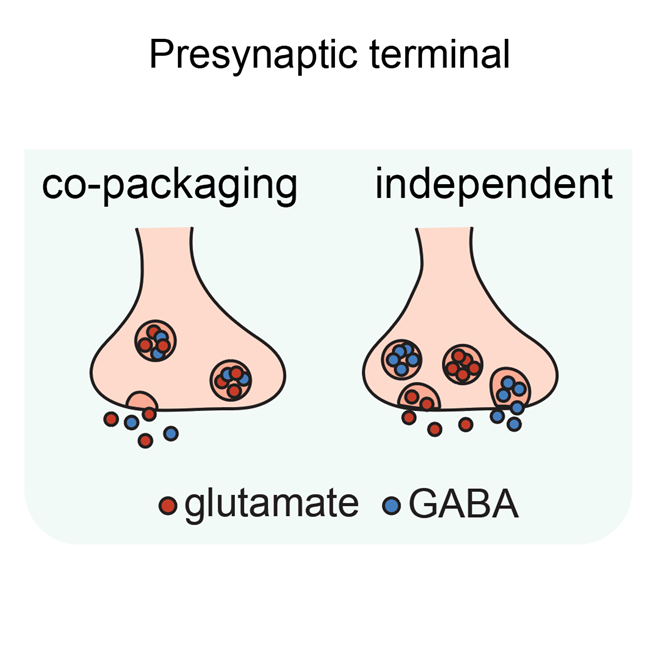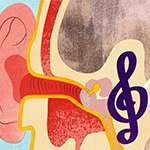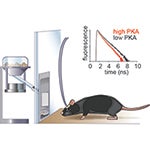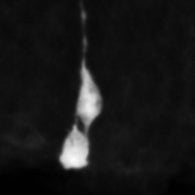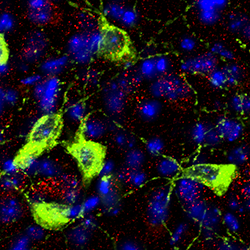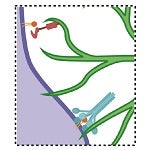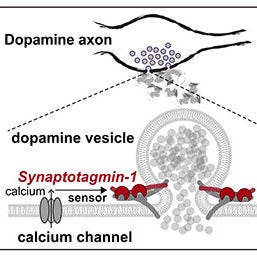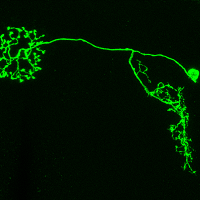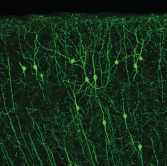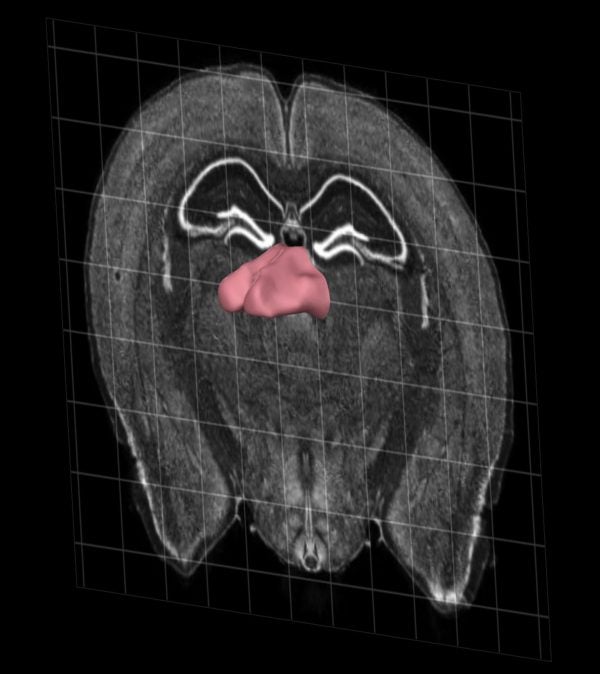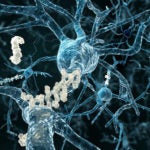Neuro Topics - Neurotransmitters
SEARCH OTHER RESEARCH AREAS
February 8, 2024
The Uchida lab used a genetically encoded glutamate sensor to examine the pattern of glutamate inputs to dopamine neurons in mice. Combining the results with existing knowledge about GABA signaling to these neurons, they gained a new understanding of how these two neurotransmitters collaborate to bring dopamine neurons the information they need to encode reward prediction error (RPE)—the difference between expected and received rewards.
Original article in: Neuron >
February 3, 2022
Seul Ah Kim from the lab of Bernardo Sabatini shares a new method for studying multi-transmitting neurons (neurons which use more than one neurotransmitter) and explains new findings demonstrating that glutamate and GABA are co-packaged in individual synaptic vesicles in the central nervous system. This work highlights co-release of opposing transmitters leading to correlated excitatory and inhibitory signals in the lateral habenula, a brain region implicated in psychiatric disorders.
Original article in: Neuron >
January 21, 2022
HMS News Q+A with Jan Drugowitsch about his lab's research on how the brain processes information in order to make split-second decisions, the role of computation, and the importance of collaboration in unraveling the mysteries of decision-making.
Original article in: Neuron >
January 21, 2022
Harvard Gazette conversation with David Silbersweig on the neuroscience behind why certain songs get stuck in our heads more than others.
Original article in: Neuron >
January 25, 2021
Suk Joon Lee shares new research from the Sabatini lab on the use of fluorescence lifetime photometry to monitor activity in the neurons of a mouse performing a reward-based learning task. Their findings provide in-vivo evidence for the presumed connection between the neurotransmitter dopamine and the enzyme protein kinase A (PKA), linked to synaptic plasticity, in the basal ganglia.
Original article in: Nature >
January 20, 2021
Miguel Turrero García and Corey Harwell share new research exploring how chromatin modifications in neural stem cells can shape the formation of complex circuits in the cerebral cortex.
Original article in: Nature >
January 13, 2021
Round up of awards and honors earned by the HBI community.
Original article in: Nature >
January 5, 2021
Krissy Lyon describes a new study from the lab of Susan Dymecki, examining how serotonin-producing neurons and dopamine interact in the brainstem to modulate mouse behaviors, and how this might differ in males versus females.
Original article in: eNeuro >
December 17, 2020
How do we perceive the reachable world? Emilie Josephs shares a recent study from the lab of Talia Konkle suggesting different brain representations for processing near-scale environments, far-scale environments, and single objects.
Original article in: PNAS >
October 5, 2020
Nicole Scott-Hewitt shares new research from the labs of Beth Stevens and colleagues, providing mechanistic insight into how microglia mediate developmental synapse pruning.
Original article in: EMBO >
August 10, 2020
Aditi Banerjee shares new research from the lab of Pascal Kaeser demonstrating that Synaptotagmin-1 acts as the fast calcium sensor to support dopamine release.
Original article in: eLife >
August 7, 2020
Tatsuo Okubo shares new research from the lab of Rachel Wilson describing a pathway connecting mechanoreceptors to compass neurons, in addition to how mechanosensory signals are transformed within this pathway.
Original article in: Neuron >
July 17, 2020
Adam Granger shares new research from the labs of Bernardo Sabatini, Chenghua Gu, and Corey Harwell demonstrating that ChAT-expressing interneurons are able to specialize which neurotransmitters they release onto different downstream target neurons.
Original article in: eLife >
May 27, 2020
New findings by Mike Wallace and colleagues in the Sabatini lab suggest that the habenula contains distinct sub-circuits that control two neuromodulatory centers important for mood, motivation, and depression.
Original article in: eLife >
March 6, 2019
Insulin signaling failures in the brain linked to Alzheimer’s disease.
Original article in: PNAS >

